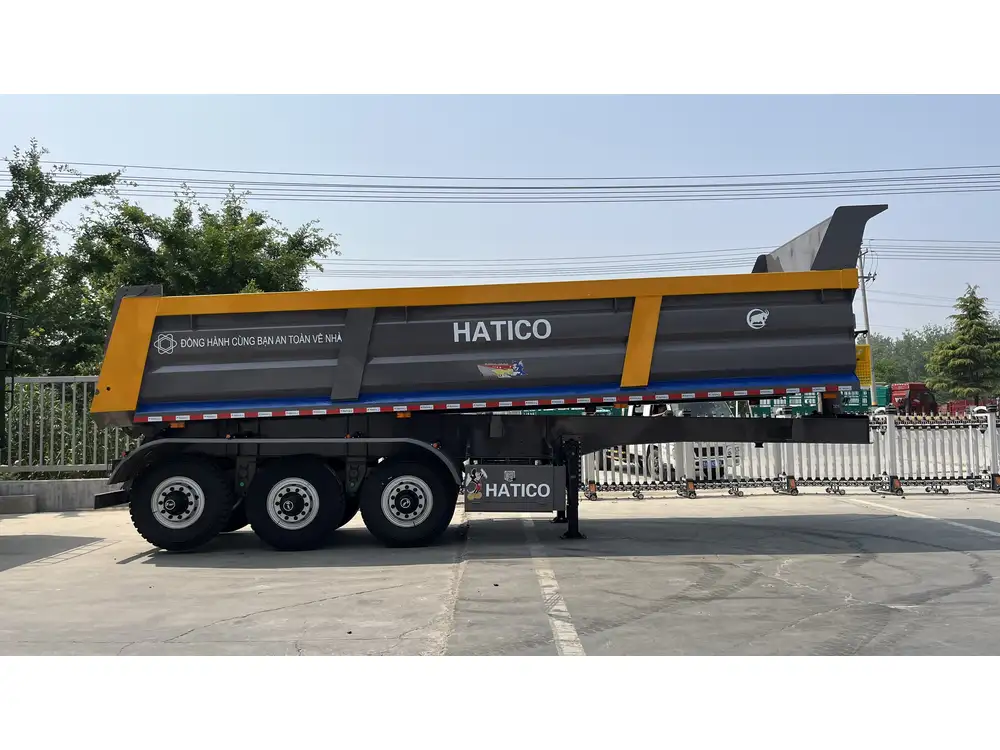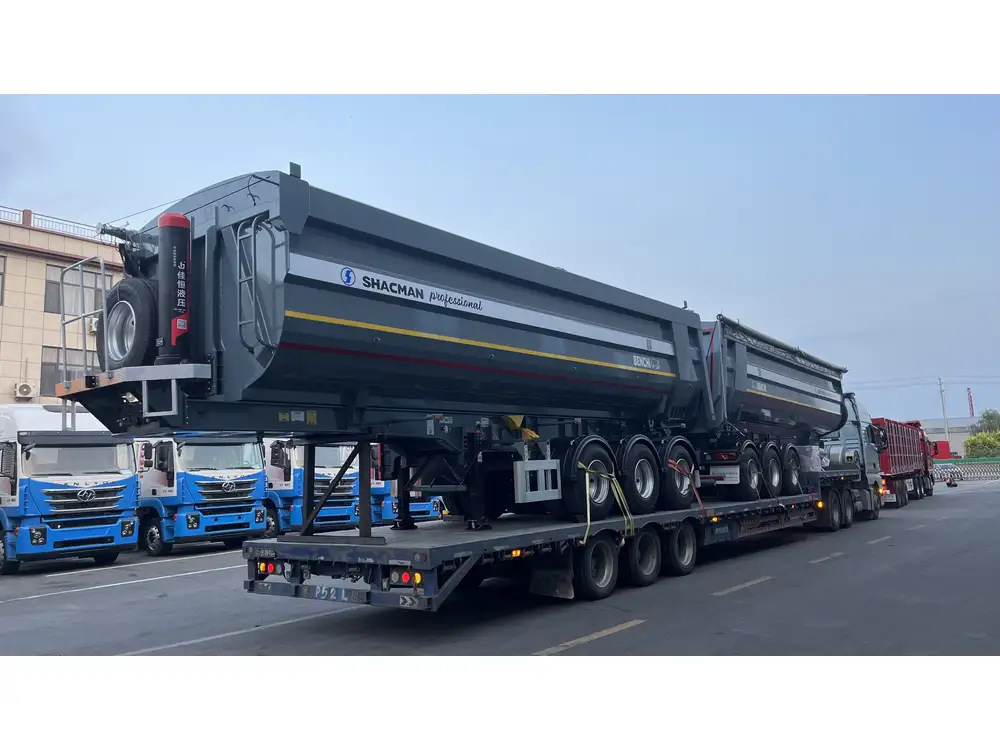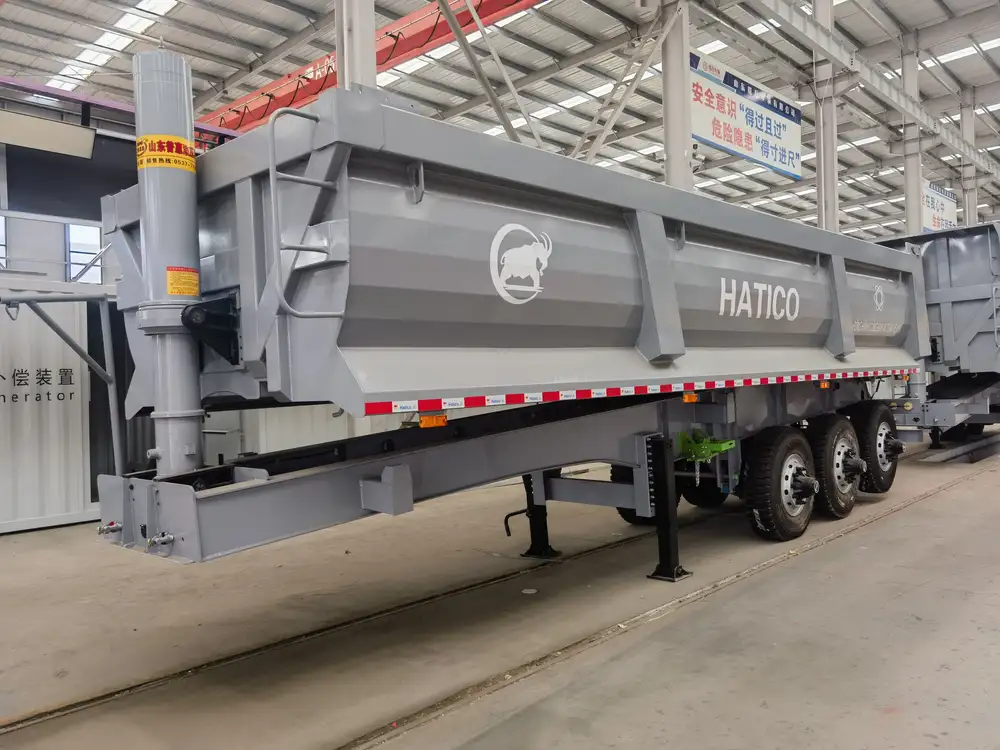When contemplating the size of a semi-trailer, one must navigate through a cornucopia of specifications and regulations that govern the trucking industry. These dimensions not only reflect the capabilities of hauling goods across distances but also adhere strictly to federal and state laws. In this comprehensive overview, we will dissect the myriad aspects contributing to the overall dimensions of semi-trailers, with a sprightly emphasis on facilitating users’ comprehension of this pivotal transportation component.
1. Types of Semi-Trailers
Before diving into specific dimensions, it is crucial to understand the types of semi-trailers, as their sizes can vary significantly depending on their intended use. The primary types include:
| Type | Description | Common Dimensions (Length x Width x Height) |
|---|---|---|
| Flatbed Trailer | Open trailers for heavy, oversized loads. | 48-53 ft x 8.6 ft x 5 ft |
| Dry Van Trailer | Enclosed trailers for general cargo. | 48-53 ft x 8.6 ft x 13.5 ft |
| Reefer Trailer | Refrigerated trailers for perishable goods. | 48-53 ft x 8.6 ft x 13.5 ft |
| Tanker Trailer | Cylindrical trailers for liquids. | 40-55 ft x 8 ft x 12.5 ft |
| Lowboy Trailer | Designed to transport heavy equipment, with a lower deck. | 48-53 ft x 8.6 ft x 3-4 ft |
1.1 Flatbed Trailers
Flatbed trailers, ubiquitous in the transportation of construction materials, lumber, and machinery, generally range from 48 to 53 feet in length, 8.6 feet in width, and can vary in height from 5 to 6 feet. This style allows for easy loading from the sides and top, making it a versatile choice for numerous industries.

1.2 Dry Van Trailers
Dominating the roads, dry van trailers, typically the same length as flatbeds, are enclosed and provide protection from the elements. Their standard height reaches approximately 13.5 feet to accommodate tall cargo. This configuration is ideal for transporting various dry goods.
1.3 Reefer Trailers
Reefer trailers serve a vital role in maintaining the integrity of perishable goods. These trailers closely resemble dry vans in size but encompass additional insulation and refrigeration components, contributing to an overall height of approximately 13.5 feet.
1.4 Tanker Trailers
With a specialized design geared for hazardous and non-hazardous liquids, tanker trailers vary in length, typically ranging from 40 to 55 feet and maintaining a maximum width of 8 feet. The height remains about 12.5 feet, ensuring regulatory compliance.

1.5 Lowboy Trailers
Lowboy trailers, favored for transporting heavy equipment, feature a unique two-deck configuration that allows for a lower center of gravity. Their dimensions can match or exceed 53 feet in length with an adjustable height between 3 and 4 feet, thereby accommodating oversized loads.
2. Standard Trailer Dimensions
Knowing the standard dimensions is imperative for motor carriers, logistics planners, and operators. Here’s a detailed breakdown of the common sizes:
| Trailer Type | Standard Length | Width | Interior Height | Maximum Cargo Weight |
|---|---|---|---|---|
| Flatbed | 48-53 ft | 8.6 ft | 5-6 ft | Up to 48,000 lbs |
| Dry Van | 48-53 ft | 8.6 ft | 8 ft | Up to 45,000-50,000 lbs |
| Reefer | 48-53 ft | 8.6 ft | 8 ft | Up to 45,000-50,000 lbs |
| Tanker | 40-55 ft | 8 ft | 12.5 ft | Varies by liquid |
| Lowboy | 48-53 ft | 8.6 ft | 3-4 ft | Up to 40,000-60,000 lbs |
2.1 Length
The length of semi-trailers is a pivotal consideration when assessing their capability to maneuver on various road types. Most trailers fall within the 48 to 53-foot length range. However, federal regulations impose a cap of 53 feet on the length of semi-trailers to ensure compatibility with the infrastructure, especially on interstates.

2.2 Width
In the United States, the maximum permissible width for semi-trailers is 8.6 feet. Compliance is crucial as exceeding this size can lead to fines and logistics issues during transport. Notably, the width of trailers remains consistent across most types, facilitating easier planning for loading and unloading operations.
2.3 Height
Height is a critical measurement with regulations typically dictating a maximum of 13.5 feet for most semi-trailers. Adherence to this limit ensures that vehicles can safely pass under bridges and through tunnels without causing dangerous obstructions. Operators must remain vigilant regarding these constraints to avoid accidental damage to cargo or infrastructure.
2.4 Weight Limits
While the dimensions focus on size, weight limits play an equally essential role in determining a trailer’s capacity. The federal weight limit for semi-trailer combinations is capped at 80,000 pounds, a figure that must include the combined weight of the truck, trailer, and cargo. This restriction is vital for maintaining road safety and structural integrity on highways.

3. Specific Uses of Semi-Trailer Dimensions
Understanding dimensions helps operators recognize the respective applications of various trailer types. The specific usages based on dimensions can include:
3.1 General Cargo Transportation
For standard freight operations involving dry goods, the dry van trailer remains the optimal choice. Its enclosed design protects goods from weather conditions, while its length offers ample space for loading multiple pallets.
3.2 Transportation of Oversized Loads
Flatbed trailers are often preferred for oversized loads such as construction equipment or building materials. Their open design allows for greater flexibility in loading unconventional shapes that wouldn’t fit in traditional closed trailers.

3.3 Temperature-Controlled Shipments
Reefer trailers cater predominantly to the food industry, transporting goods requiring specific temperature settings. Knowing the dimensions assists companies in scheduling pickups and deliveries, ensuring optimal product quality when it reaches consumers.
3.4 Hazardous Material Transport
Tanker trailers must adhere to stricter regulatory dimensions, accommodating safety features essential for liquid cargo. Understanding these parameters is vital for carriers involved in the transport of chemicals or fuels.
3.5 Heavy Equipment Shipping
Lowboy trailers are specially designed for heavy machinery transport, offering low ground clearance that helps in facilitating the loading of heavy equipment. Operators must understand the legal weight and height limits to avoid penalties.

4. Regulatory Considerations
Navigating the intricate web of federal and state regulations governing semi-trailer dimensions is essential for compliance and safety. Below are some critical points to consider:
Federal Regulations: The Federal Highway Administration (FHWA) oversees guidelines on vehicle dimensions on an interstate level, ensuring uniformity across states.
State Variations: States may have specific regulations that could allow variations in dimensions for state and local roads. Trucking companies must have a thorough understanding of the regulations in every state in which they operate.
Permits for Oversized Vehicles: If your load exceeds standard size restrictions, obtaining a permit is essential. Many states have designated routes for oversized loads to ensure safe transit.
Tip: Always keep abreast of local trucking regulations to prevent operational disruptions or legal complications.
5. Conclusion: The Importance of Understanding Semi-Trailer Dimensions
The dimension of a semi-trailer is not merely a set of numbers—it represents a tightly woven fabric of regulatory compliance, operational efficiency, and logistical precision. For manufacturers and operators alike, grasping the scope of how large a semi-trailer can be is pivotal. It influences everything from vehicle selection to routing and delivery strategies, ultimately affecting the bottom line.
The next time you contemplate “how large is a semi-trailer,” remember that this inquiry encapsulates an entire world of complexity beneath its surface. By thoroughly understanding the critical dimensions and their implications on logistics and transport, operators can optimize their operations, enhance productivity, and stay ahead in the ever-evolving landscape of the freight industry.
In this thorough analysis, we have covered various facets contributing to the dimensions of semi-trailers. This structured and detailed exploration is tailored to inform and engage those seeking precise information in the dynamic realm of transportation manufacturing.



